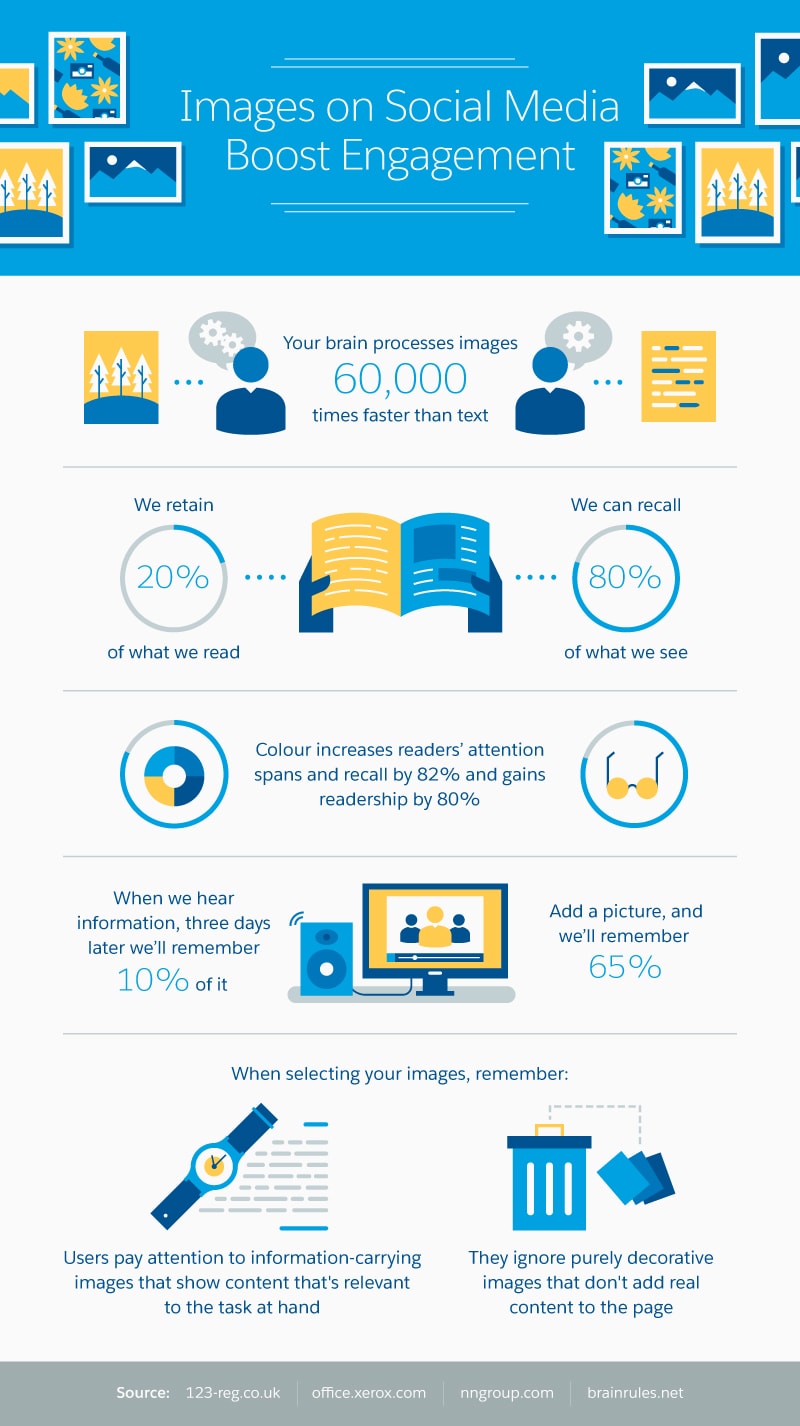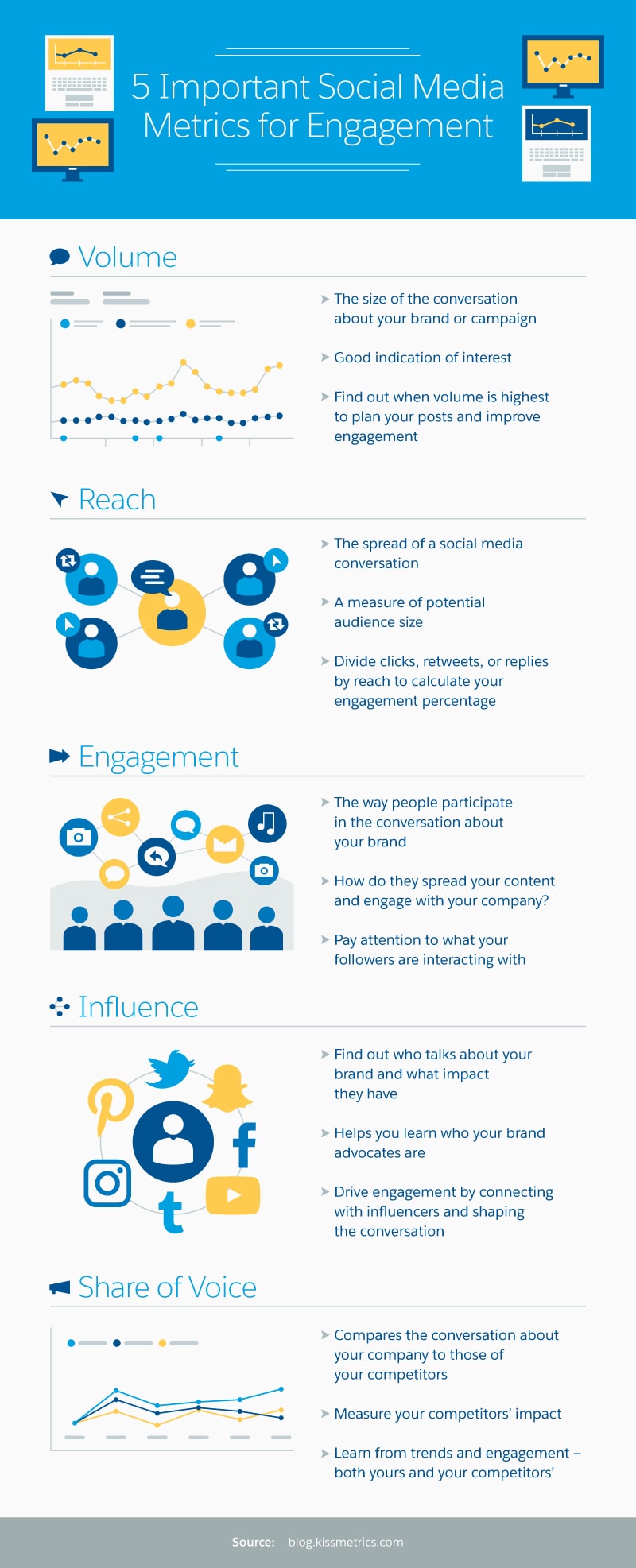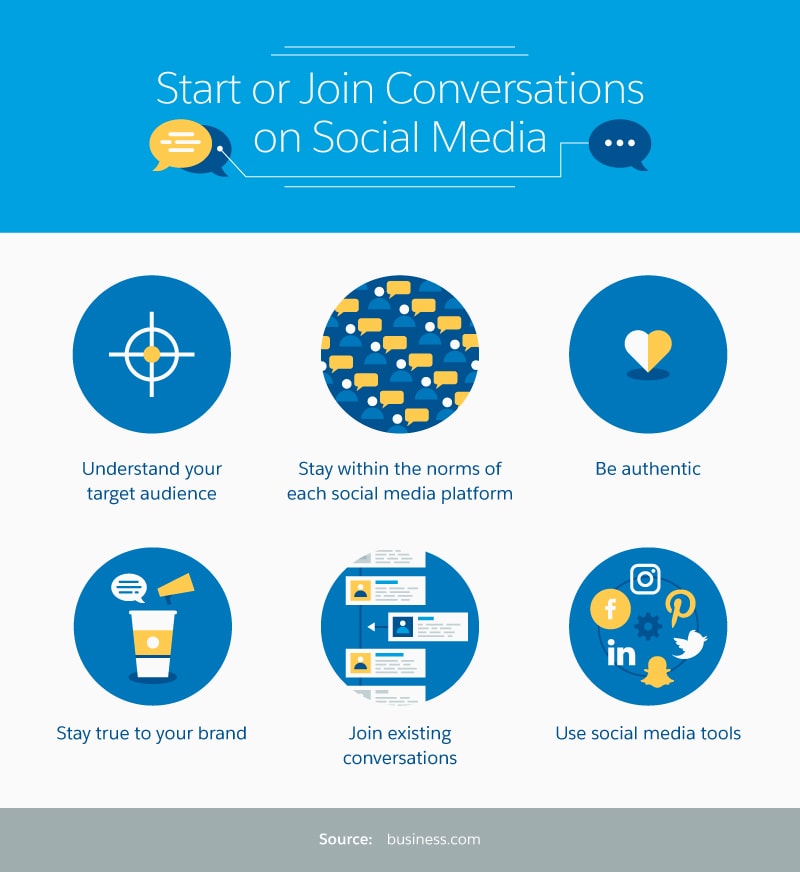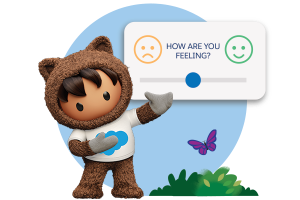How to Improve Your Social Engagement Without Ads



This blog will focus on social platforms like Facebook, Twitter, & Snapchat, & how to get more engagement based on proven methods.
Salesforce UK
Social media can be a hugely powerful tool for businesses to reach customers, but many businesses struggle to really connect with customers on those platforms due to limited participation. For that reason, social media engagement is an important metric for any business with an online marketing strategy.
If you think that you need a huge advertising budget in order to improve social engagement, you’re mistaken. This article will focus on social platforms like Facebook, Twitter, and Snapchat, and will explain how to get more engagement based on methods that have been proven, statistically, to work. It will cover what types of posts you should create for each site when to post to be most visible, and how to increase the visibility without spending a fortune on paid ads.
Create Posts Specific to the Platform
There isn’t one type of social media post that works best with every platform. On Twitter, you want to create short, pithy posts and interesting headlines. For Facebook, images and media tend to do well, increasing engagement by as much as 85%. Your long-form pieces will likely fit in better on LinkedIn.
What this means is that you need to create posts that are specific to each platform your business uses, rather than just copying or recycling the same posts on every platform. (That can get repetitive for people who follow you on more than one social platform.) In addition, creating posts that are optimized for each platform can increase the likelihood that people see your posts and actually respond or interact with them in some way.

Ask Questions
On many platforms, including Facebook, Twitter, and Snapchat, asking questions can be a great way to increase engagement. A simple question that starts conversations or gathers customer feedback gives customers a reason to interact with you. According to JDR Group, Facebook posts that include questions get around twice as many comments as other posts.
When you use this tactic, be specific about how customers should respond, even if it seems obvious. On Twitter, you could say, “Tweet in your responses,” while you might say, “Snap me back,” on Snapchat. At the very least, this lets people know that you actually want responses and aren’t asking a rhetorical question.
Include Calls to Action
Along those same lines, be specific about other calls to action. Increasing social media engagement doesn’t just mean getting people to respond to your posts. Encourage engagement through other actions, such as liking your Facebook posts, retweeting your content on Twitter, and repinning your images on Pinterest.
Customers don’t always need specific calls to action in order to take part in those activities. However, including them sometimes helps improve those engagement numbers. For example, if you share a recipe or tutorial on Pinterest and you want people to repin it, you could say, “Repin to save this post for later.” This may get customers to think about situations where they could use that information in the future, which increases the likelihood they will repin the content.
Time Posts Carefully
Timing plays a big part in improving social engagement. Think about it: If you only post content at night when your target audience is asleep, they aren’t likely to see it. Your fans miss the opportunity to engage with your brand. Each social platform and target market has different preferences and best practices when it comes to timing. Experiment with different posting schedules to see what works best for your particular business.
In general, think about when members of your target audiences are using those platforms. If you target professionals on Facebook, you may need to post when they’re home from work for the day. However, if your target is made up of stay-at-home parents, then midday could be a great time to post. According to Social Media London, on average, the afternoon tends to be a good time to post content if you want to get shares and clicks.
Measure to See What Works
When it comes to timing, posting content, and even the platforms you use, it’s important that you keep an eye on what works and then make adjustments. Most social platforms have a dashboard with metrics where you can view engagement statistics such as responses, favourites, and re-posts. You can also go through your posts to find out which ones performed better than others.
Keep an eye on trends that may impact how you post in the future. For example, if you notice that your photo posts on Facebook get more engagement than those without photos, increase your photo use in the future. If you find that you get more responses when you tweet in the morning rather than the afternoon, schedule more Twitter posts during those times.

Respond to Followers
When people do engage with your social media content, it can be helpful (or even necessary) for you to respond in some way. You don’t have to send a personal thank you message to everyone who likes your Facebook posts or favours your tweets, but answering questions or thanking people for sharing your content can go a long way.
Personalised responses to your followers’ posts on social media can make them feel more connected to your brand — they’ll appreciate an actual person (not an automated reply) engaging with them online. These responses can also just keep conversations going, which can increase engagement for your social media efforts in both the short and long term.
Most importantly, when customers or potential customers ask questions or offer feedback to companies on social media, they often expect a response. Ignoring or forgetting to answer their posts can do harm to your online reputation.
Engage With Others
You don’t have to wait for people to respond to or interact with your posts in order for you to engage with them on social media. You can jumpstart your social media conversations by replying to posts.
There are several ways to do this:
- Find members of your target audience or industry influencers to follow on social media, and then interact with their posts on occasion, especially when they’re relevant to your business or offerings.
- Repost content from others in your industry when you think it will be helpful or interesting to your followers.
- Create posts and mention or tag relevant people in the posts.
However, you go about it, starting conversations and engaging with others online can help increase the number of active fans who will interact with your content.

Provide Incentives
Contests and giveaways are fun incentives that drive social media engagement and can help you improve your engagement. Your content and process should vary based on the platform, but the general idea is to give people an incentive to interact with your content in some way. Contests often result in a quick spike in engagement, according to Jellyfish; however, when done right, they can lead to more long-term engagement as well.
On Twitter, a simple offer of a free product to one person who retweets a particular tweet on a given day will help your content get shared and will get people involved with your content. On Instagram, ask people to share an image of them using your product —have them tag your account so you can track the entrants.
Contests lend themselves to certain platforms better than others, and some sites, like Facebook, have specific rules about hosting contests or giveaways. Read the rules and create a simple process for tracking and rewarding those who enter.
Give It Time
Improving social engagement isn’t something that happens overnight, though conversations and contests can certainly help. However, if you want to build lasting and consistent engagement, as well as relationships with your fans, you need to work on these things over a long period of time.
Today, in the age of the customer, be dedicated to putting in the time and effort in order to get great results on social media. Even paid ads won’t see great results if you don’t back up those ads with quality content and consistent engagement.
Follow these tips. You may see slow growth, but you need to give it some time for your strategy to work. Ads can give your social media efforts a boost in the short term, but you don’t need to spend your whole marketing budget just for a short-lived spike in numbers. Consistency and patience go a long way in making sure your social media engagement grows as it should. With continued effort and an understanding of the Internet of Things (and how an interconnected lifestyle may be the future of buying habits, even for something as simple as lightbulbs), your social media campaigns could eventually be the pinnacle of your marketing efforts.

















